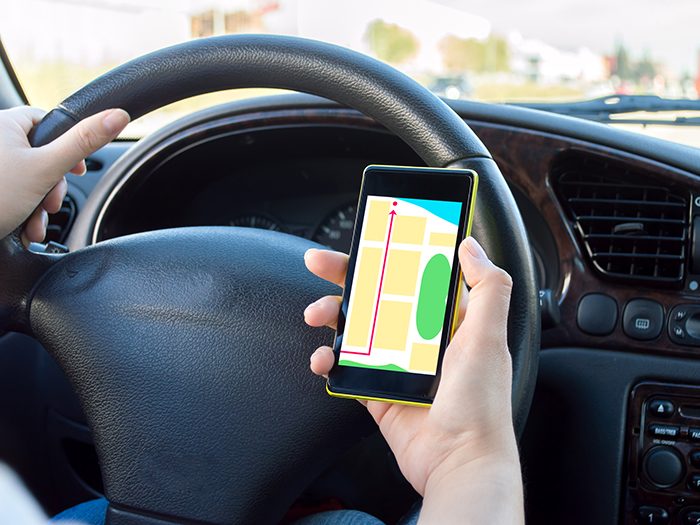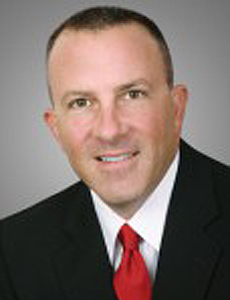Fleet Safety
More Focus on the Road

Distracted driving, particularly due to texting or other cell phone usage, is increasingly resulting in accidents, as well as workers’ compensation claims for employee drivers.
While data is scant on whether distracted driving specifically has resulted in higher workers’ comp claims, many insurers can infer the rise by reviewing their claims involving motor vehicle accidents and government statistics on distracted driving.
For example, the percentage of AF Group’s claims involving motor vehicle accidents rose from roughly 2 percent in 2009, to nearly 3.5 percent at year-end 2016, said Bob Lapinski, a spokesperson for the Lansing, Mich.-based holding company for Accident Fund Insurance Co. and three other workers’ comp insurers. During that same period, the National Highway Traffic Safety Administration documented a spike in distracted driving accidents, Lapinski said.
That trend alone should push employers to institute policies to minimize distracted driving among their workforce, said Dave Brandolino, loss control manager at Chicago-based Third Coast Underwriters, another division of AF Group. Brandolino is based in Nashville.
“It all starts with the hiring process,” he said.
Employers should check candidates’ motor vehicle driving records to see if there any incidents due to distracted driving, as well as CSA scores assembled by the Federal Motor Carrier Safety Administration, which measure compliance, safety and accountability, Brandolino said.
It’s also import to implement best practice hiring guidelines, such as establishing minimum age requirements and road experience.
Employers should also establish a strong accountability program for drivers using telematics — electronic devices installed in vehicles that transmit data about how the driver is operating the vehicle, such as whether the driver is speeding, hard breaking, rolling or swaying the vehicle, he said. Cab cameras can also be activated by such events.
“We encourage employers to establish a tracking and monitoring system of those data points to develop forward-looking metrics,” Brandolino said. “This is also an important tool to hold drivers accountable by coaching and training, rewarding and disciplining them based on defined standards and individual performance.”
There are also devices on the market that block cell phones from making phone calls and answering emails and texts if the driver is moving, he said.
“We encourage the use of technologies that combat distracted driving because you just can’t put a price on a life,” Brandolino said.
Formalize a Policy
Chris Hayes, second vice president of transportation risk control at Travelers in Hartford, Conn., cited several statistics by the National Safety Council: the average work-related motor vehicle injury claim costs $72,540, which is twice as much as other work-related injuries. Moreover, 54 percent of drivers said work would motivate them to do a distracting activity while driving — such as making a phone call, searching for a location using a GPS system, or reviewing and sending emails.
According to the Travelers’ 2016 Business Risk Index, 65 percent of the insurer’s business clients have employees that use their personal vehicles for business activities.
“So it’s important for organizations to include that in their vehicle safety plan, because they still face liability risk and employee safety risk even if employees are driving their personal vehicles on behalf of the company,” Hayes said.
Organizations should put together formal policies around not using cell phones while driving, having all drivers sign off on the policy, and keeping documentation of that, he said. These policies should be regularly communicated to help reinforce the message that distracted driving is a risk that should be avoided.
“Organizations should also promote that culture to other employees in the office, to let them know that if they contact employees in the field, [they should] make sure those employees are not driving when they take the call or answer a text or email,” Hayes said. “Employees who are driving should know that they don’t have to immediately respond to people in the office trying to contact them, but rather they can wait until they are stopped in a safe place to respond.”
One way to avoid the risk of distraction from the phone is to keep it in the glove compartment or on the passenger seat out of reach, so they can focus on driving instead, he said.
“If a person is driving 55 miles per hour and takes their eyes off the road for five seconds, they will have traveled the length of a football field without watching carefully or safely,” — Randy Thornton, president, risk control, York Risk Services Group, Lafayette, La.
Even before cell phones were prevalent, there was distracted driving due to fatigue, eating while driving, fiddling around with the radio, or reaching behind to grab something in the back seat, among other things, said Edward Canavan, vice president, workers’ compensation practice & compliance at Memphis-based Sedgwick. Canavan is based in Santa Ana, Calif.
“Now with cell phones, distracted driving is a huge problem – there’s around a half million people a year that are injured as a result of distracted driving, which also impacts workers’ comp claims,” Canavan said.
The no-fault system within workers’ comp adds another layer of complexity to a claim, he said. Most likely the claims will have to be paid, but in some jurisdictions, the benefits can be altered due to negligence on the part of the injured worker.
“But the negligence has to have met a certain threshold and this has not been tested because the criteria is so high,” Canavan said. “An example would be in California, where the act causing the injury would need to meet the threshold of being serious and willful misconduct. This could be a solo accident and not necessarily involve another person.”
Preventive Strategies
From a loss prevention and risk management standpoint, there is a lot of technology that can help to discourage texting while driving, he said. For example, there’s a mobile app that will give a driver the fastest route based on road conditions, traffic and construction, but it detects motion and asks people if they are the driver or the passenger.
“However a person could just lie, so an even better type of technology would be actual devices installed in cars that prevent cell phone use while driving,” Canavan said. “Within several years, these types of devices might be required by the National Transportation Safety Board and standard in all cars.”
Debra Levy, senior vice president, quality management and WC practice leader at York Risk Services Group in Atlanta, speculated on why there is no hard data on workers’ comp claims for distracted driving: very few employees are willing to admit they were using their phone either talking or texting at the time of an accident, especially if there is a company policy against it.
“Unless an employer is going to investigate phone and text usage after every motor vehicle accident occurrence, this data will not be captured,” Levy said.
To lessen accidents due to distracted driving, employers must have a strong distracted driving policy that includes random checks on both company and personal phones during expected travel times, she said. Once an employer commits to a distracted driving policy, they must follow the policy diligently to get the desired effect on driver behavior. They must also follow through on disciplining employees who violate the policy.
“If employers don’t follow through on an implemented distracted driving program, they could find themselves in a difficult liability situation if the accident is caused due to an employee violating the distracted driving policy,” Levy said.
Anything that can distract a person can be distracted driving, including spilling coffee or dropping something — “anything that takes your eyes off the road,” said Randy Thornton, president, risk control at York Risk Services Group in Lafayette, La.
“There’s a really powerful factoid: If a person is driving 55 miles per hour and takes their eyes off the road for five seconds, they will have traveled the length of a football field without watching carefully or safely,” Thornton said.
Texting while driving is illegal in most states, and the federal Department of Transportation also has been successful in banning texting and the use of cell phones while driving among commercial drivers, he said.
York also recommends that employers regularly educate their drivers, and not underestimate the fact that new drivers and experienced drivers alike need to be educated and reminded of the dangers of distracted driving.
“You’ve got to monitor it, you’ve got to measure it, you’ve got to train around it. It’s a circular process by nature,” York said. “There is always employee turnover, and before you know it, you have 10 new drivers. It’s important that everyone is operating under the same set of dynamics.”












